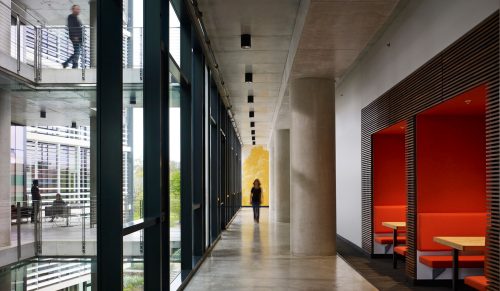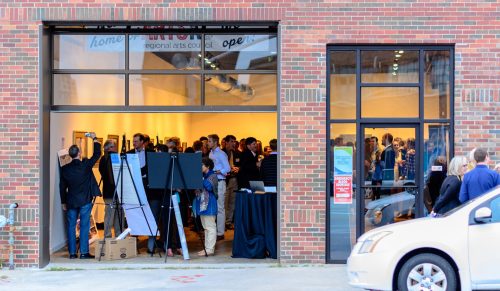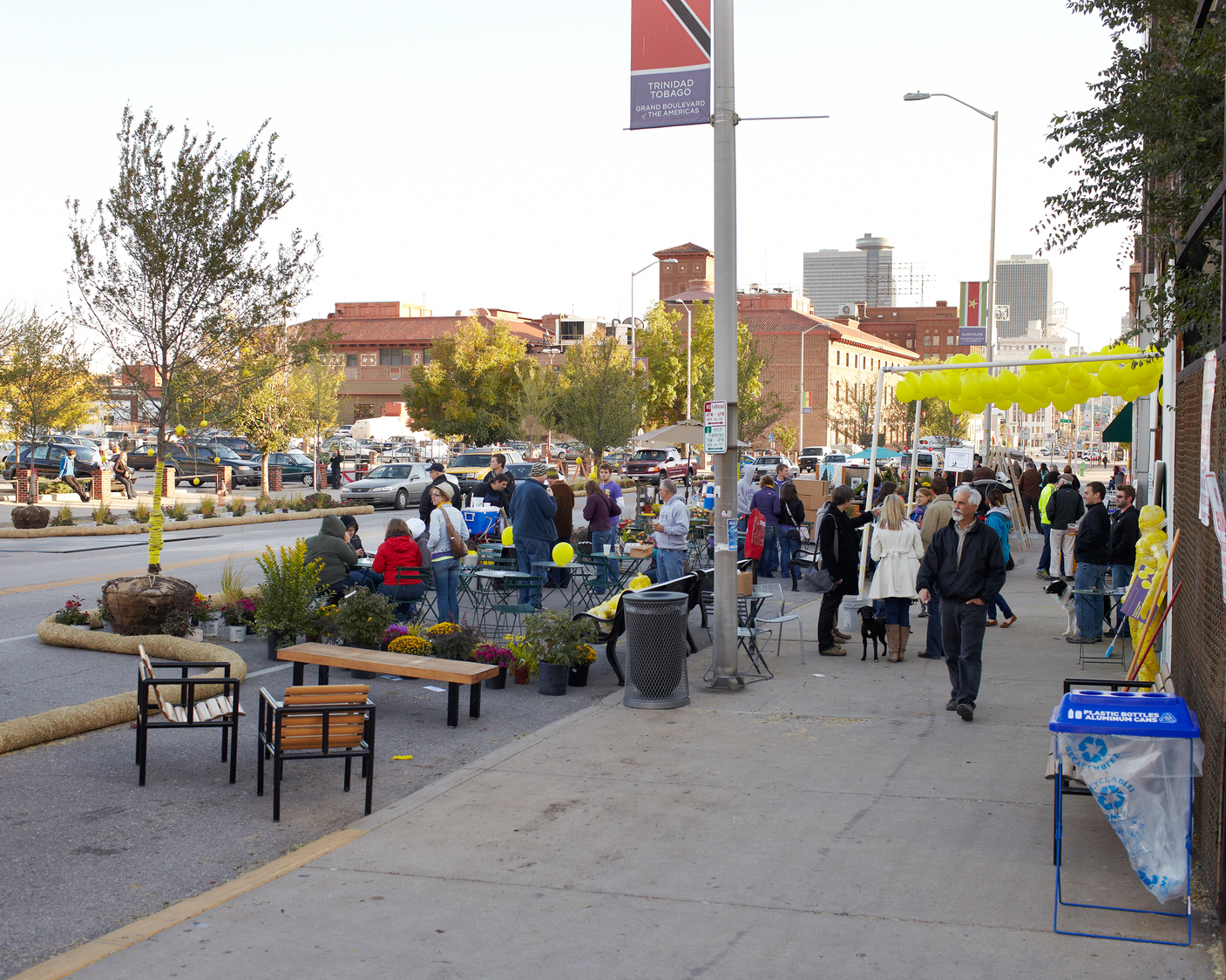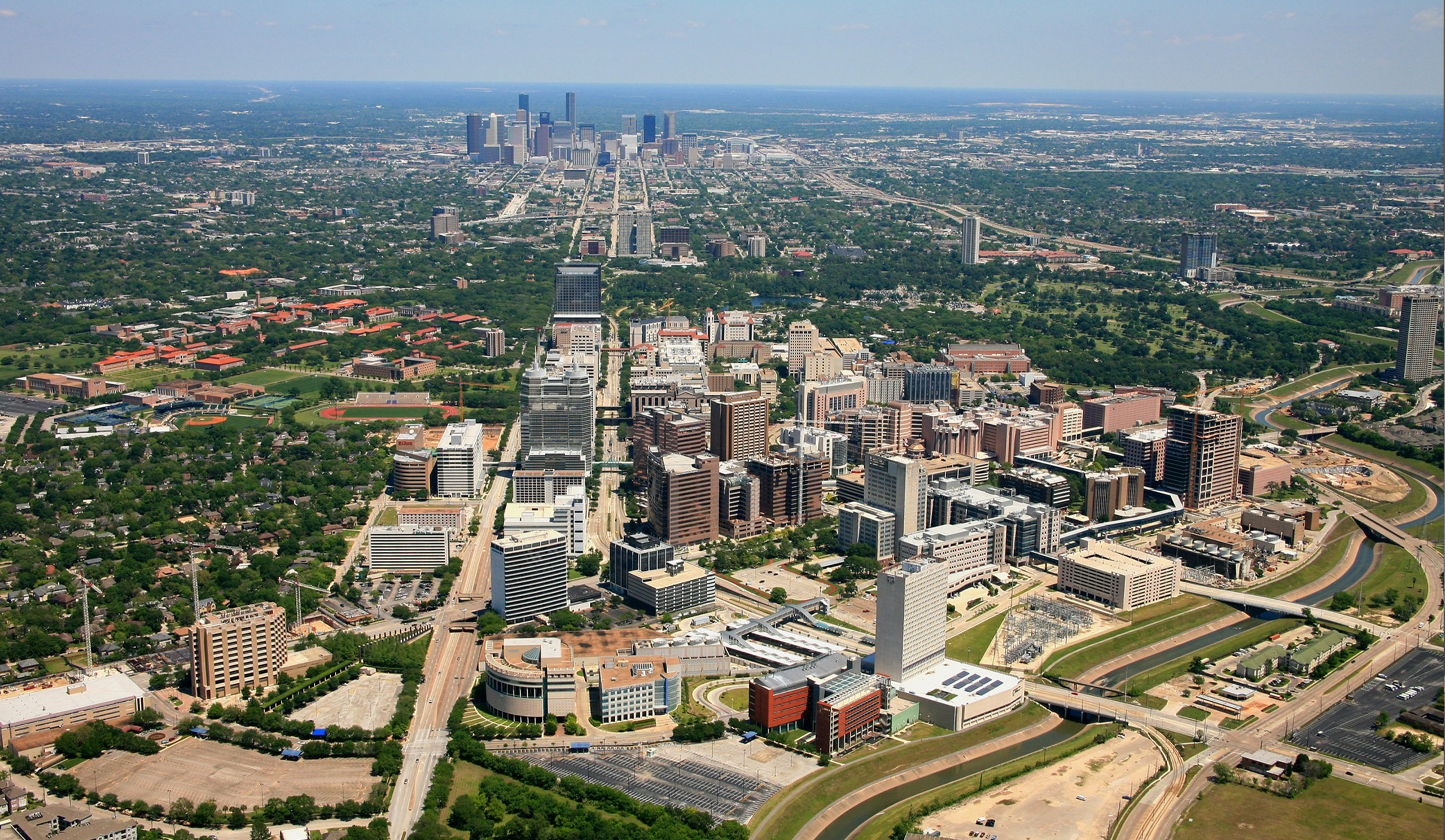
Response to Harvey
Imagine a green cities/green infrastructure movement across the US. Imagine vibrant and resilient renewed American cities and communities that compel people to inhabit and are in harmony and balance with nature.
Our hearts are full of sorrow for the people who have been impacted by Hurricanes Harvey, Irma, and Maria. The loss of life and property, and disruption of daily activities will be a long process of healing and recovery. It will not be easy.
As part of a multidisciplinary design practice well-known for helping cities and regions address tragic weather events, much like the ones that struck Houston, Florida, and the Southeast, we have been asked what we should do to help with these tragedies — or, more importantly, what should we do to prevent them in the future? We think the second question is the most important and where we will be most effective as a firm, and as part of a larger community of designers and planners across the country.
It is clear that any approach chosen will be very expensive, long in duration, and disruptive for years to come. It is not clear if that approach will lead to more resilient cities and preparedness for the next event. Will we learn from this terrible experience and begin the process of transforming Houston and Miami into resilient mega-regions designed to weather the next storms without the scale and magnitude of impact to humans, the built environment, regional economy, and quality of life?
We have learned that natural ecosystems suffer short- and long-term destruction from unexpected weather events, but receive much less attention. Yet, we depend upon these ecosystems to sustain life as we know it. It is important that recovery strategies consider the symbiotic relationship between healthy natural systems and healthy people. We have also learned that designs that do well for people and do well for nature also have another benefit — they prove to be the right economic decisions, too. This is often referred to as satisfying the triple bottom line.
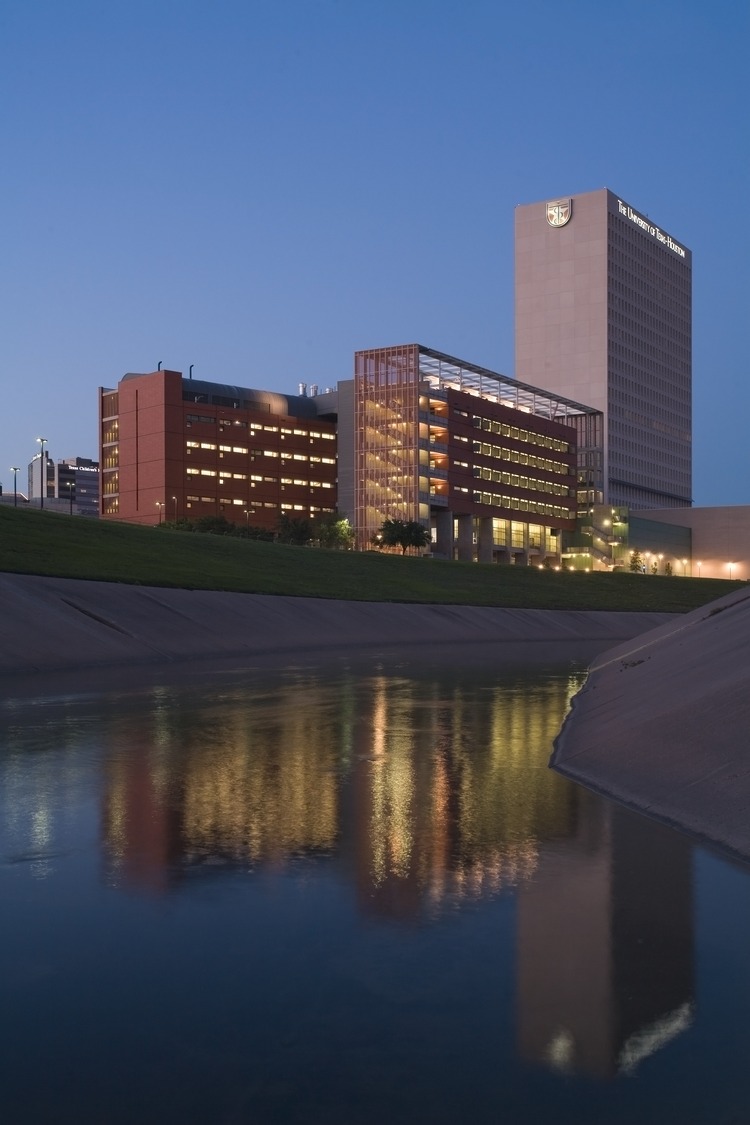
FAYEZ S. SAROFIM RESEARCH BUILDING AT THE UNIVERSITY OF TEXAS HEALTH SCIENCE CENTER AT HOUSTON
We began working in Houston nearly 20 years ago, designing two buildings for the University of Texas Health Science Center at Houston. Each building embodied and proved their sustainable and resilient design during Harvey. More recently, we completed the renovation of the International Coffee Building, one of the oldest buildings in Houston. It maintain operations of systems throughout the event, even though the unoccupied ground floor was completely submerged — an event for which it was designed.
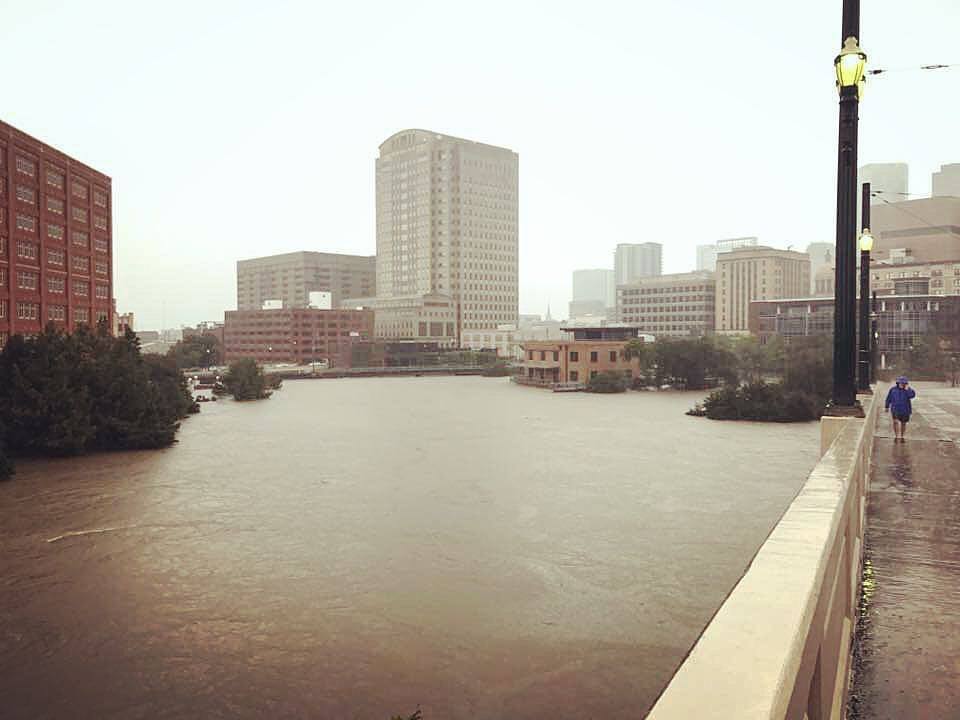
INTERNATIONAL COFFEE BUILDING © LAKE|FLATO ARCHITECTS
It is very gratifying that the actions we took, in anticipation of an event like Harvey, worked at the building scale.
The city scale is much different. Dramatic change is necessary to prevent events like Harvey from becoming more damaging and dangerous. The economic costs of repairs will soon become unaffordable with or without insurance for the private and public sectors. It is time to reinvent and reinvest with the intention of more beautiful, resilient, sustainable, prosperous, and healthy communities across our country.
A few days into the storm, we met with Congressman Emanuel Cleaver in our Kansas City office and focused on the topic of the storm. The conversation included the National Flood Insurance Program, which will expire soon without Congressional action. This is an important issue, especially without strategies that dramatically improve our nation’s ability to be more resilient and weather storm events.
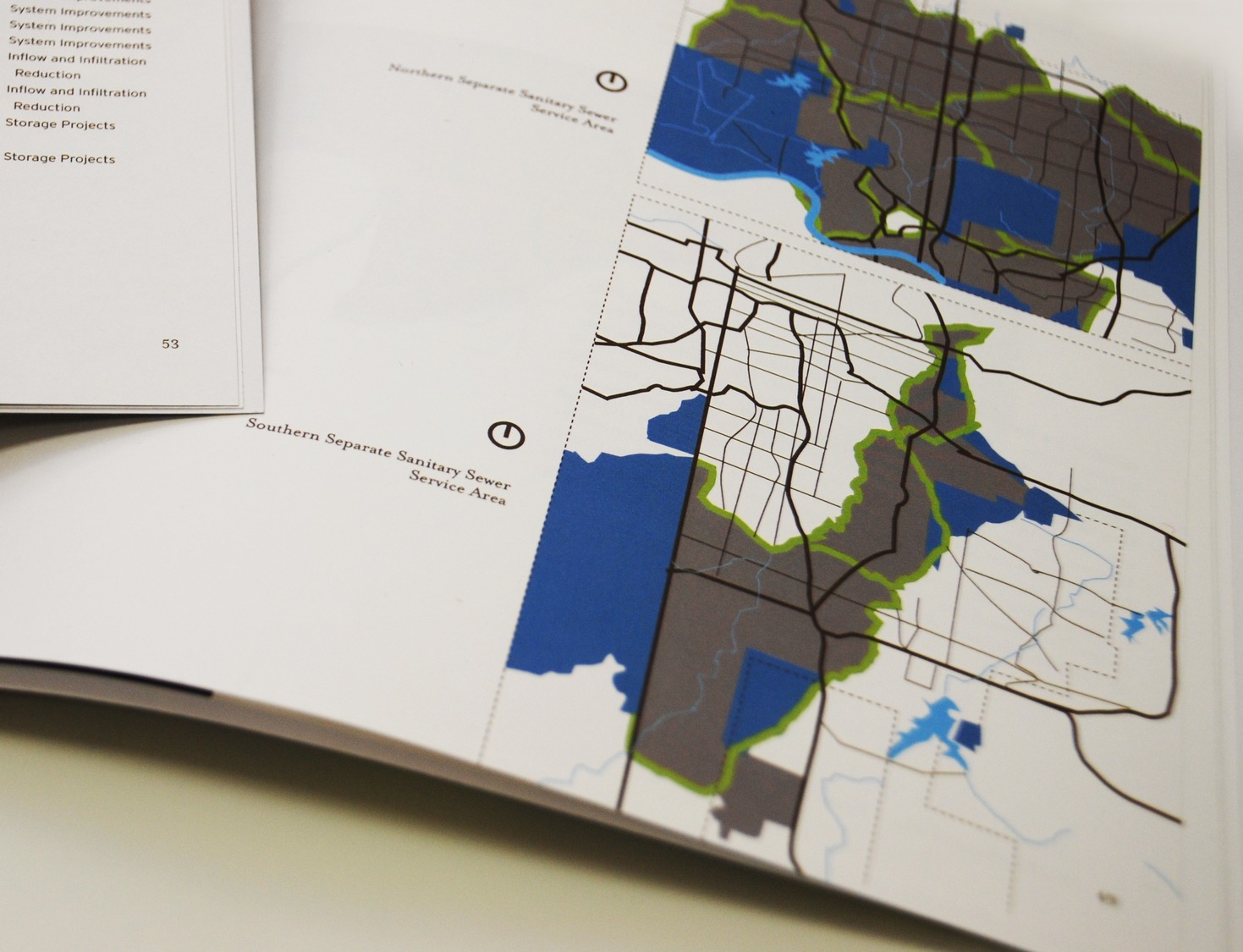
KANSAS CITY STORMWATER OVERFLOW CONTROL PLAN
We then discussed green infrastructure. Congressman Cleaver is very aware of the subject and was instrumental in negotiating the first Stormwater Overflow Control Plan for Kansas City, Missouri, with the EPA. He understands the many connections between natural systems and urban infrastructure. He is aware there are strategies to find balance and harmony between nature and the built environment, and yet, more frequently, the results are not harmonious or balanced.
Similarities with Houston challenge both our cities with long-term resiliency. Like Houston, Kansas City is vast and sparsely populated, with more miles of freeway than any metro area in the country. Both cities suffer flooding, caused or made much worse by urbanization, due to lack of proactive stormwater management, regularly placing them in emergency response mode.
In both cities, there are indicators that residents are looking for something different. Fixed rail transit is beginning to make a comeback; young urbanites are migrating to the core; and we have many opportunities to increase quality of life through new models of places to live, work, play, and learn.
Imagine a transformed Houston and Kansas City:
– Green infrastructure systems;
– Smart mobility and transit systems that allow severe street diets, higher density living options, concentration of contemporary shopping, entertainment, recreation, and other amenities;
– Growing green space and room for open landscapes that manage and clean water during storm events;
– And, the transformation of streets into walkable and bikable corridors that connect people and neighborhoods.
These are ideas that could be part of the solution.
The problems facing these two cities are systemic across nearly every metropolitan area in the United States. Each city is different and could benefit greatly from broad-scale reinvestment in green infrastructure, mobility, urban design, and resilient redevelopment strategies. These strategies would connect people with nature and provide the amenities of contemporary urban life, while being proactive in creating resiliency to prevent events like Katrina, Sandy, Harvey, Irma . . . and now Maria, from being so deadly and destructive.
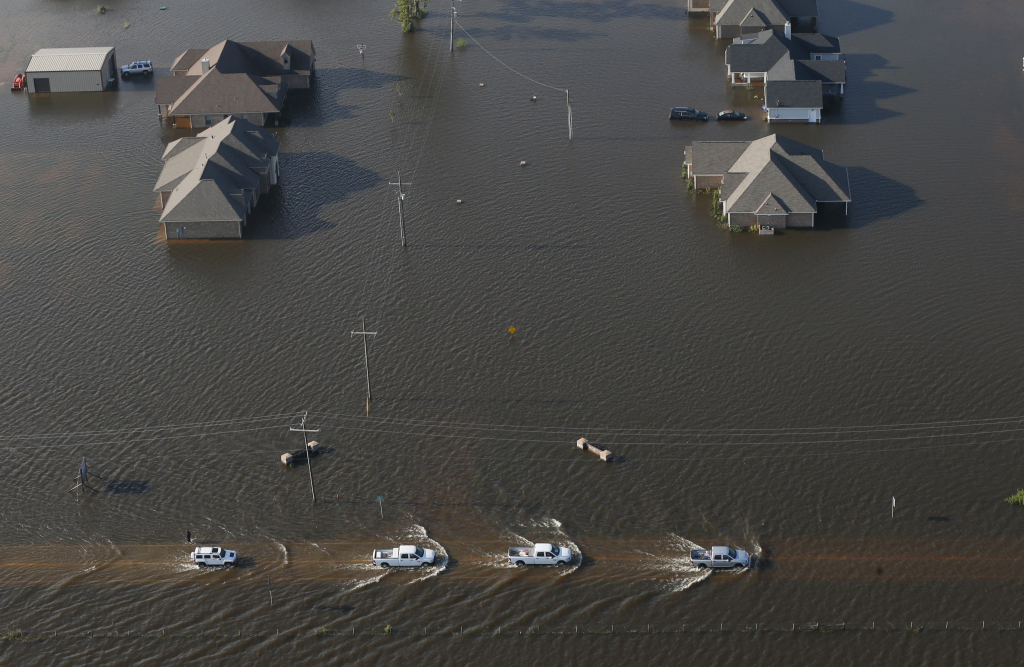
HURRICANE HARVEY FLOODING IN HOUSTON
It is imperative that we not become complacent in a few weeks and let these events fall out of the spotlight. It is time for a call to action. Mayors and other elected officials; regional planning agencies; regional transportation and transit authorities; the AIA, APA, ASLA, ULI, and other organizations should all come together and create a unified voice of reason and responsible action to lobby Congress to implement a reinvestment in cities and communities.
This will begin the process of preventing future disasters and elevating quality of life for Americans. It will ensure resilient co-existence with an increasingly more powerful nature and long-term economic prosperity. Such investments would create jobs, grow skills and companies, elevate entrepreneurism, foster beautiful and better-functioning communities, reduce dependence on private cars, develop effective mobility across communities, create vibrant communities, and increase tax bases through more valuable real estate.
This is the right action for creating compelling cities that are healthy, resilient, economically sustainable, and in balance and harmony with nature.
Also posted to Medium.
